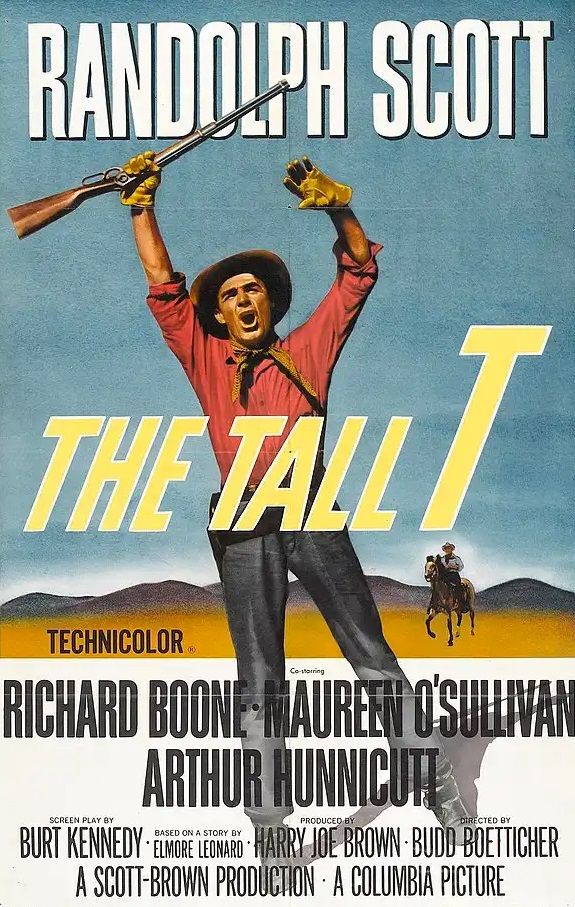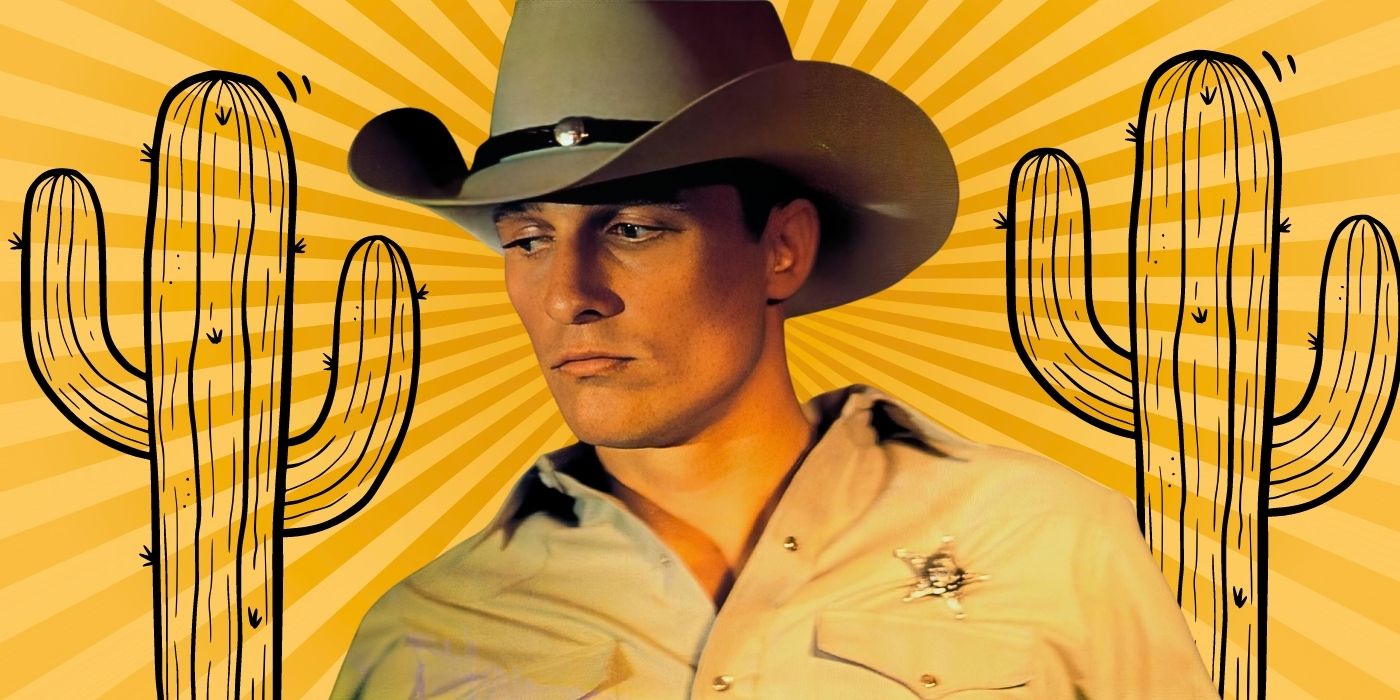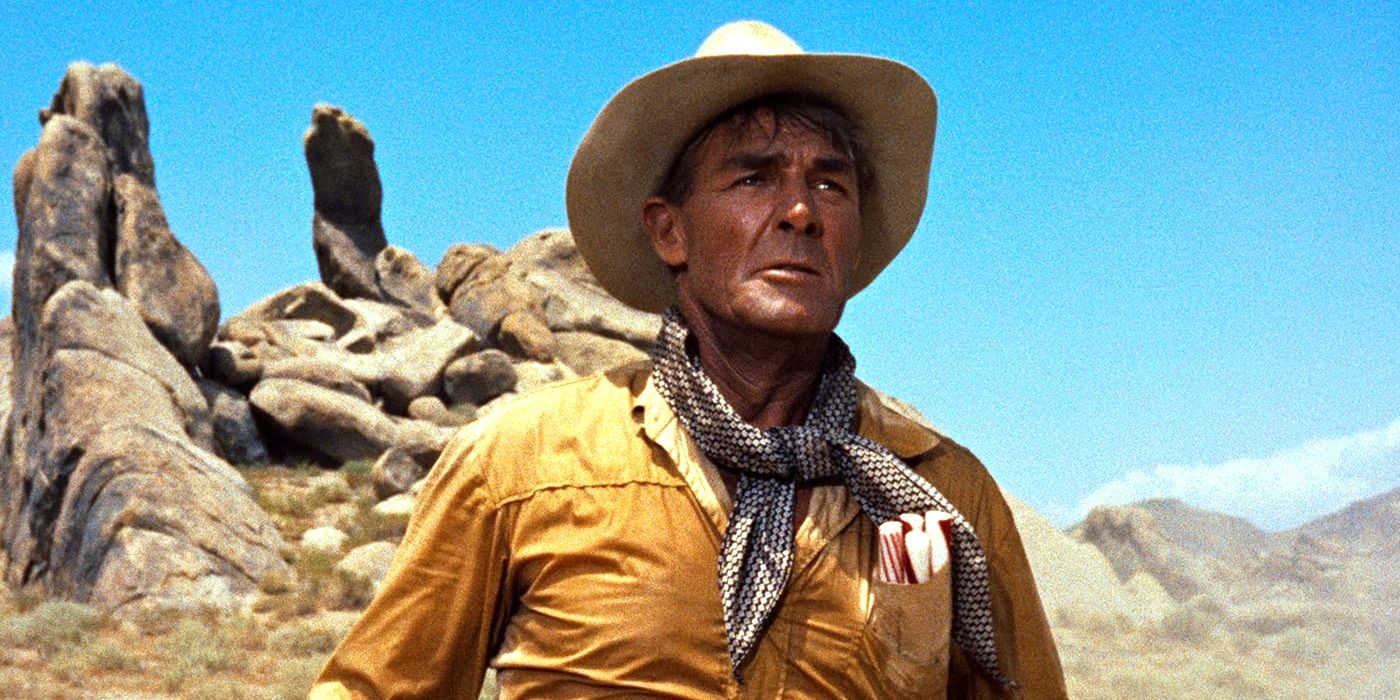The Big Picture
- The Tall T flips the Western archetype on its head with complex characters and a gritty, survivalist storyline.
- The film offers a dark and realistic depiction of the Wild West, focusing on pragmatism over heroics.
- Elmore Leonard's influence is felt in every frame, with themes of deception, survival, and moral ambiguity.
The Tall T is more than the sum of its parts. A Western aimed squarely at adult audiences, Budd Boetticher's 1957 film elides a fatalistic view of the old West by appearing classical at a glance. It marks the second collaboration between Boetticher and lead actor Randolph Scott's "Ranown Cycle" of films. Ranown was the name of Scott's production company, and while the duo's first collaboration, 1956's Seven Men From Now, was not technically produced by Ranown, it inaugurated a run of low budget Westerns that would withstand the test of time and become highly influential. The Tall T, being the first official entry in the cycle, lays everything out in a lean, mean package. The technicolor visuals feel of a piece with classical Westerns of the era, but the content, largely owing to its origins as an Elmore Leonard short story, is bleak and provocative. The film navigates this dissonant tone economically, with verve and tenacity. Every movement or gesture that occurs on screen stands for something, and every line hides something just under the surface.
It's a pragmatic film about, well, pragmatists. Scott's character, Pat Brennan, is no gunslinger-hero. He's an over-the-hill rancher who becomes involved in a sordid kidnapping when the stagecoach he is on is accosted by a team of bandits. The highwaymen are led by Richard Boone's Frank Usher, a lithe and deceptively complex figure. Along with Brennan, a newly married couple are on the coach, and, before long, the robbery turns into a hostage situation starring Brennan and Maureen O'Sullivan's Doretta Mims, an heiress who Usher and his men hold for ransom. Being a budget B-picture, most of the film takes place in one setting, a small camp, and it's there that the complicated relationship between Brennan, Usher, and Mims develops into a disarming and dark picture of the psychic toll of survival in the 'wild' West.

The Tall T
An independent former ranch foreman is kidnapped along with an heiress, who is being held for ransom by trio of ruthless outlaws.
- Release Date
- April 2, 1957
- Director
- Budd Boetticher
- Cast
- Randolph Scott , Richard Boone , Maureen O'Sullivan
- Runtime
- 78 mins
- Main Genre
- Western
- Writers
- Burt Kennedy
- Studio
- Columbia Pictures
Randolph Scott Isn't Your Typical 'White-Hat' Cowboy in 'The Tall T'
The most crucial element of The Tall T is its sly subversion of the classic Western 'white-hat/black-hat' dynamic. The film absolutely has a white hat (in Brennan) who, of course, overcomes the black hat (Usher). However, each of these characters' depth lies in the fact that they are not indicative of these archetypes by their nature, but rather their circumstances. Brennan is a plain man. He is kind, generous, and jovial, but plain all the same. Our introduction to the character sees him buying candy for a young boy who lives on a remote ranch. The boy, sequestered away from peers and the community, is lonely, and provides a frame of reference for the loneliness that plagues Brennan and the rest of the cast. Brennan is humbled early on, as well. He makes a bet with an old acquaintance that he can ride a bull. He fails miserably, and ends up horizontal in a water trough. Brennan is capable though, and has integrity despite his troubles, but he is not a preternaturally gifted shot with a rifle, or an invincible hard-body a-la John Wayne. His occupation is not to dispense justice at the behest of Western dramatic structures, but to herd cattle and till fields. This approach to realism is the staging ground for the film's darker turns.
Without a horse, Brennan hitches a ride with a friendly stagecoach driver and the austere pair of newlyweds. Maureen's husband, Willard (John Hubbard), is clearly a vulture. Priveleged and unprincipled, he'll be the first to go. The coach is beset by Usher's gang at the ranch where the young boy lives. The boy and his father have been killed, their bodies dumped in the well. The cavalier attitude with which Usher and his men address the murder of a child is genuinely disturbing (especially for a 50s movie), and static shots of the well punctuate the entire sequence, the technicolor image creating a sense of horror in what lies just off the edge of the screen. Brennan and Usher quickly establish a fraught rapport, as though they understand each other in some intrinsic way. Both are disgusted by Willard's disregard for his wife in the interest of his own self-preservation. Both have had to stoop low to survive themselves. The Tall T addresses what many Westerns before it overlooked, that the people who occupied the bucolic vistas of the American West were people on the margins, and that survival happens not as a result of principle, but in spite of it.
Elmore Leonard's Ethos Permeates Every Frame of 'The Tall T'
The poetic conceit of the film – the conflict between values, circumstances, and survival – is surely a holdover from the 1955 Elmore Leonard story that inspired it, "The Captives." Leonard was a hard-boiled writer with a penchant for fatalism, but the saturated and inviting shot compositions of a classical Western don't exactly scream that ethos out loud. Instead of subverting the typical visual style of the era's Westerns, Boetticher opted to use that look to comment on the style itself. The events in the film only get more depraved as it goes on, and the bright colors end up accentuating the effect of violence. When Brennan and Maureen make their escape, the bright red blood of Usher's dispatched henchmen jumps off the screen. It's a sly way to acknowledge the artifice of this style of filmmaking in a clever display of auto-critique, and it mirrors the themes at play in the story.

This ‘90s Matthew McConaughey Western Is Also a Sharp Crime Thriller
Director John Sayles crafts a compelling, intricate story.In The Tall T, everyone is using someone. Willard marries Maureen for her money, but she needs a husband to get by in a lonely world that's doubly as lonely – and dangerous – for women. In one scene, Usher admits to Brennan that he is in fact not a killer himself, but has allied himself with them as a means of survival. Brennan himself resorts to cruel deception as a means of escape, and leaves a man to bleed out in anguish. By that token, it's a film about the lies we tell to get by – to the world and to ourselves.
'The Tall T' Paints in Shades of Gray
Brennan occupies a role in the film where he should be a paragon of virtue, but these nihilistic undertones cast doubt on the effectiveness of such a concept. The film asks a question: is virtue something we hold ourselves to, or something we convince ourselves of? Perhaps this is what secures the bizarre tone of the final line. Having made their harrowing escape, Brennan and Maureen set out. Maureen is in tears from the shock of violence that just occurred. "Come on now, it's gonna be a nice day" says Brennan as he throws his gun on the ground. Despite what he's saying, his tone is forceful. He seems frustrated, almost spiteful in his delivery. Perhaps his frustration comes from disillusionment. He didn't play the white hat for the greater good, but to survive, and he went through hell to do it.
The Tall T is available to stream on Tubi in the U.S.

